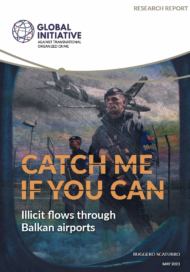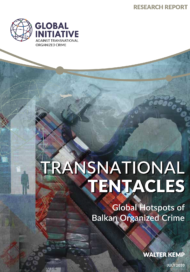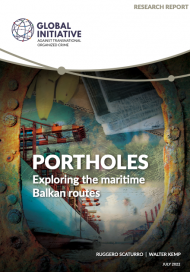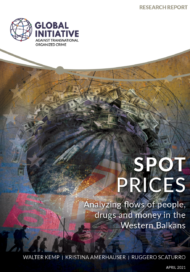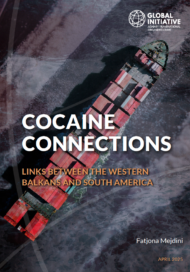Posted on 15 May 2023
This report applies the ‘hotspots’ approach that has been used by the Global Initiative Against Transnational Organized Crime’s (GI-TOC) Observatory of Illicit Economies in South Eastern Europe to analyze organized crime in the Western Balkans as well as the activities of criminal groups from the region in other parts of the world, as exposed in the earlier ‘Transnational tentacles’ report.
As in the context of the risk assessment conducted on Western Balkan ports last year, this approach examines places that are associated with organized crime (hotspots), rather than people or markets. The objective is to focus on the factors that make these locations vulnerable or attractive to organized crime; assess the internal dynamics and players; plot the locations on a map and connect the dots between them to get a clearer overview of the geography of crime in the region.
When researching hotspots of criminal activity in the Western Balkans and the activities of Balkan criminal groups abroad, it became evident that there were a growing number of police and customs operations in major international airports, particularly in Tirana (Albania), Skopje (North Macedonia) and Belgrade (Serbia). These operations merited a closer look, so it was decided that an organized crime-based security threat assessment of airports in the Western Balkans should be undertaken. Although illicit activities are also being conducted using private jets that land at minor airports and airstrips, it was beyond the scope of this study to analyze every aviation site in the Western Balkans. Rather, the focus is limited to two major airports, which are presented as case studies: Belgrade and Skopje’s international airports. These seem to be the hubs for illicit activities related to human trafficking, smuggling of migrants and goods, as well as main entry points for shipments of drugs and precursors.
Using a similar model to the research conducted for the report ‘Portholes: Exploring the maritime Balkan routes’, we developed a methodology for carrying out a risk assessment, together with airport security experts. Among the issues covered by this methodology are airport ownership; trade and passenger volumes; security measures; major illicit markets; criminal actors involved; law enforcement operations; and enabling factors of illicit activity, such as infrastructure, governance and corruption. These assessments were done at the airports of Belgrade and Skopje between November 2022 and January 2023, and involved semi-structured interviews with more than 20 airport experts, including security providers (i.e. representatives of customs, border police, state police, prosecutors’ offices and private security companies), representatives of logistics companies operating in the Western Balkans, international experts on aviation security, academics, and journalists reporting on illicit trade through airports. The findings, outlined in the two case studies, are set out in the report.
The report also provides an analytical overview of security at airports, factors of vulnerability in aviation departing from and arriving in the Western Balkans, and how these vulnerabilities are exploited for criminal purposes. In addition, the report considers how airports are part of a wider regional infrastructure that feeds into a network of trade and travel corridors, and particularly how they serve as nodes connecting Western Europe and Asia. Recommendations to help mitigate the risk of illicit flows through these aviation hotspots are given in the final section of the report.
